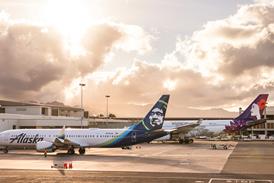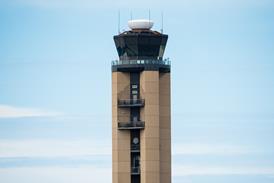Two of China’s largest airlines have warned of a “substantial loss” for their first-quarter financial results.
Both China Eastern and China Southern Airlines flagged the financial hit in their monthly traffic results for March, where they note that even with “timely measures” taken to mitigate the of the coronavirus outbreak, a financial loss was inevitable.
China Southern states that it had, in light of the pandemic, “actively responded” to market demand changes, and “vigorously reduced” costs.
“However, in view of the severe impact of Covid-19 on the civil aviation industry, a substantial loss is expected for the Group’s operating results in the first quarter of 2020 and will adversely affect the operating results in the first half of the year,” it adds.
China Eastern echoed similar sentiments, adding: “[There] is still great uncertainty in the time span and severity of the epidemic around the world, which may magnify the impact on or result in a delay in the recovery of travel demand.”
They join compatriot Air China, who in its 2019 annual results, warned of an operating loss “in the short term”.
The dire pronouncements of the three biggest Chinese carriers are a far cry from their financial performance during the same period in 2019, where they each turned a profit.
Air China reported a first-quarter profit of CNY3.98 billion ($562 million) in 2019. China Eastern posted an operating profit of CNY2.81 billion for the period, while China Southern saw a profit of CNY3.55 billion.
Traffic results from the three Chinese carriers’ for March tell two different stories. While overall figures were still depressed, domestic traffic largely saw signs of recovery, especially when compared to February.
China Southern carried 3.75 million passengers for the month, a 69% decrease year-on-year. It was, however, more than twice the number carried in February. Domestic passengers accounted for the lion’s share — at 3.61 million passengers.
RPKs across the network fell 72% compared to the same month last year, led mainly by international and regional traffic. However, it was an 82% improvement from February.
Overall ASKs for the month dropped 60.4%. When compared to February, it grew nearly 48%.
The carrier reported passenger load factor to be at 58.2%, nearly 25 percentage points lower than 2019.
As for China Eastern, it carried 2.26 million passengers for the month, a 79% drop year-on-year. This was, however, a higher figure compared to February, when it only carried 1.32 million.
RPKs for the month tumbled 79%, while ASKs fell 69% year-on-year. Overall passenger load factor for the month came in at 55.8%, a drop of 27 percentage points compared to last year.
Lastly, Air China carried 2.92 million passengers in March, a 69.1% decrease compared to last year. On a month-on-month basis, it was a 82.7% increase, led by a two-fold jump in domestic passenger numbers.
RPKs for the month fell 73.5% year-on-year, while ASKs dropped 62.4%. However, when compared to February, both figures saw increases, with RPKs going up 38.6% and ASKs rising 25.5%.
The Star Alliance carrier’s overall passenger load factor fell nearly 24 percentage points to 56.8%.

















































